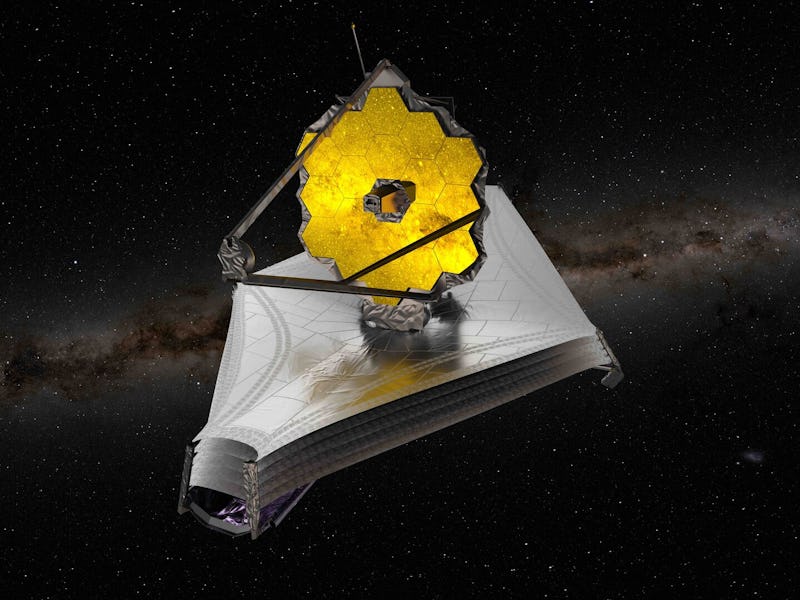James Webb Space Telescope reaches its final destination — 1 million miles from Earth
The telescope is getting ready to begin observing the ancient cosmos.

NASA’s James Webb Space Telescope (JWST) has finally reached its cosmic perch, and is gearing up for its observations of the ancient universe.
On Monday, JWST settled into its final orbit at the second Sun-Earth Lagrange point, or L2. This is a gravitationally stable point where the Sun and Earth’s gravity cancel each other out. The team behind the mission are waiting for the telescope's instruments to cool down before it begins its observations, but are expecting the first tantalizing JWST image to drop within five months and the machine telescope to be fully operational shortly after.
JWST launched on December 25, 2021, and has spent nearly a month traveling through space to reach L2.
“We're pretty excited that the spacecraft portion has been going as well as it has, and looking forward to the science instruments,” Amy Lo, JWST vehicle engineering lead at Northrop Grumman, said during a press conference on Monday.
At 2 p.m. Eastern on Monday, JWST fired its onboard thrusters for nearly five minutes (297 seconds) to complete its final course correction to the telescope’s trajectory. That final mid-course burn added about 3.6 miles per hour to Webb’s speed, sending it to its L2 orbit.
Now that the telescope has reached its L2 point, mission control will take about six months to ensure that its instruments are working properly before it can begin scientific operations.
Webb’s halo orbit at L2 allows it to stay facing away from the Sun and Earth permanently.
During this journey to L2, the telescope has used as little propellant as possible to save up for its remaining lifespan. The perch at L2 ensures that JWST stays facing away from the Sun at all points, protecting itself against the light and heat of the star so that the telescope’s instruments can get cold enough to function.
It also keeps the telescope out of the shadows of both Earth and the Moon, allowing it to have an unobstructed view of the universe for the entire duration of its orbit. Meanwhile, Hubble goes in and out of Earth’s shadow every 90 minutes.
“Everything we’re doing is about getting the observatory ready to do transformative science,” Jane Rigby, Webb operations project scientist at NASA’s Goddard Space Flight Center, said during a press conference. “The next three months at least are all about getting the mirrors aligned, so they’re working as one unified telescope, and then in the last two months of commissioning, we will make sure that the science instruments are working and that they are ready to do science.”
The telescope sports a 21-foot-wide, 4-inch-thick tiling of 18 beryllium mirrors coated in gold, acting as one large mirror. Webb’s large mirror and its position outside of Earth’s influence allow it to observe distant objects in the universe better than any other instrument in the world.
JWST will probe the atmospheres of potentially habitable exoplanets, peer back in time at galaxies that formed during the early years of the universe, and investigate Solar System moons that may have some form of life in their subsurface oceans.
Webb will take 180 days to complete one orbit around the Sun.
“The orbit is basically on the anti-Sun direction from the Earth, right, so it’s out there, and it’s in the full orbit around the L2 point around twice a year,” Rigby said. “We have to keep the sunshield such that the Sun and Earth are blocked to the telescope. The telescope never gets sunlight on it again, that’s the goal.”
Webb can see about a third of the sky at any given time. The field at which the telescope can be pointed rotates slowly as Earth and the telescope go around the Sun. As the team makes a schedule for Webb’s observations, they look over the targets that have been approved and work out a schedule that minimizes the travel time between each target.
“Webb can look at any given point in the sky during the course of the year, but at any given one time, it can look at about a third of the sky,” Rigby says.
This article was originally published on